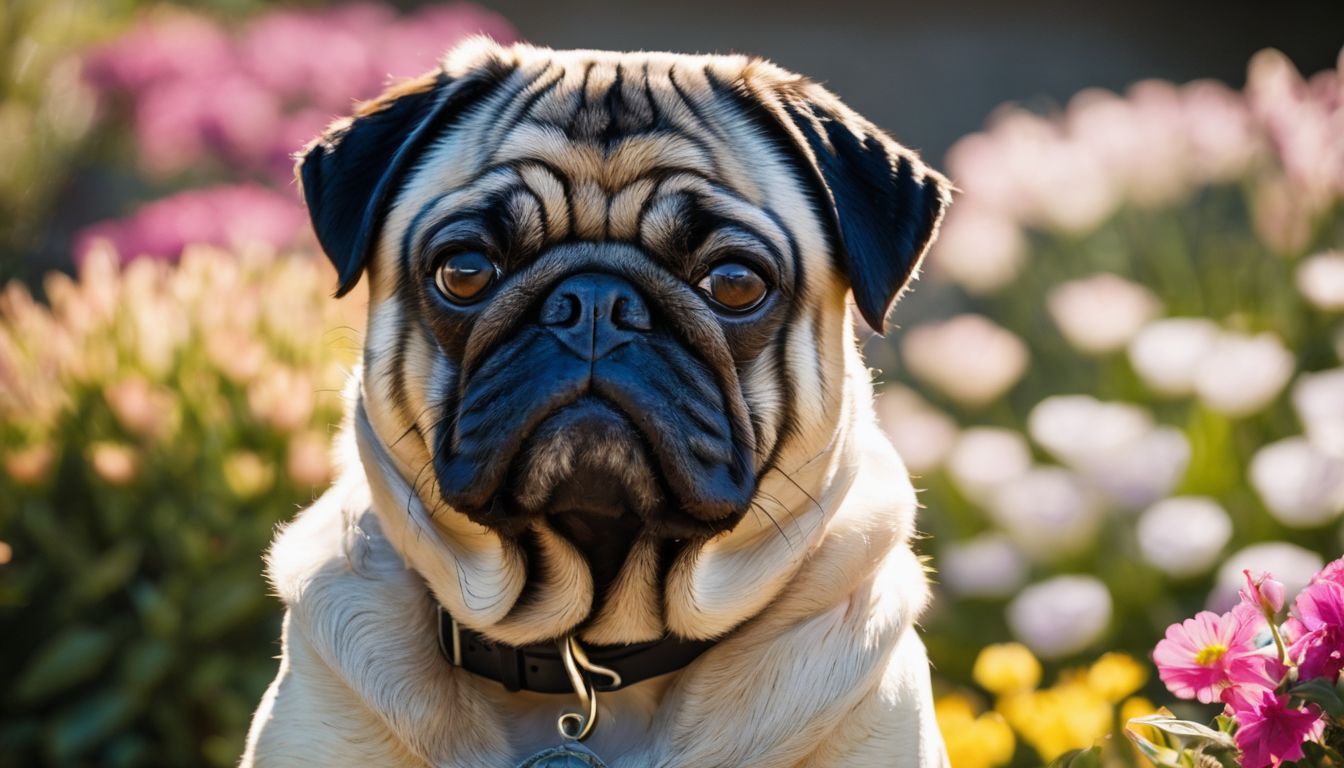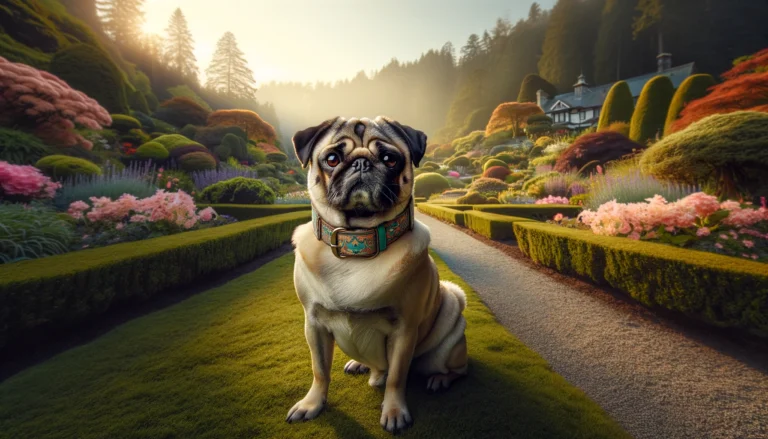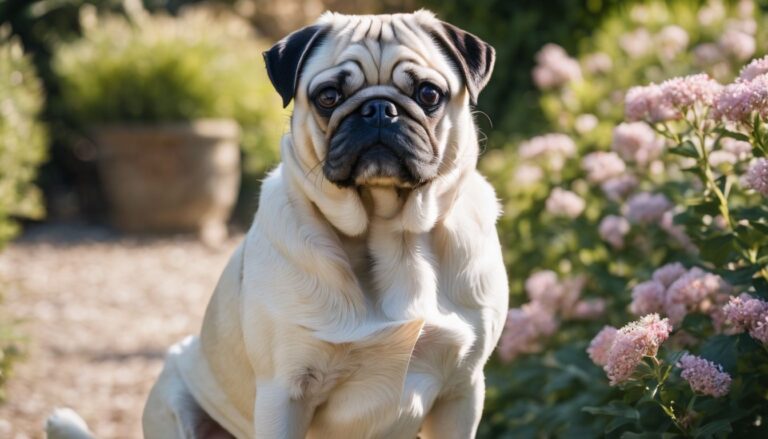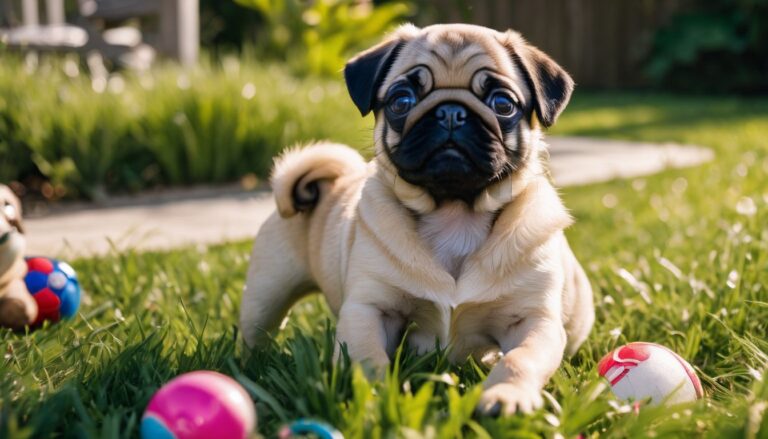Are Brindle Pugs Rare? Uncovering The Truth About Brindle Coated Pugs
Are Brindle Pugs Rare?
As avid pug aficionados, we can’t help but be fascinated by the quirky traits that make our cuddly friends stand out. That’s why we were incredibly intrigued when stumbling upon a gem in the pug palette: the brindle pug.
This striped wonder is a rare sight indeed—with fewer than 1% of all pugs flaunting this eye-catching coat pattern. Join us as we explore this rarity, diving into what makes brindle pugs so mesmerizing and how you might find one to warm your lap and heart.
Together, let’s uncover the allure of these four-legged marvels with stripes!
Key Takeaways
- Brindle pugs are incredibly rare, making up less than 1% of the pug population, due to their unique coat pattern that requires a specific combination of recessive genes.
- These dogs have ancient roots in China and despite their rarity, brindle pugs have won the hearts of many around the world without being officially recognized by major kennel clubs like AKC or FCI.
- Potential health issues common to all pugs such as eye problems and breathing difficulties also affect brindle pugs. It’s important for owners to provide regular veterinarian check-ups and appropriate care.
- Adopting a brindle pug from a rescue organization can give them a second chance at life while supporting ethical breeding helps ensure the well-being of these pups.
- Caring properly for a brindle pug includes managing their diet to prevent obesity, providing moderate exercise suitable for their brachycephalic nature, grooming regularly to maintain their coat, and patient training considering their playful but stubborn character.
What is a Brindle Pug?
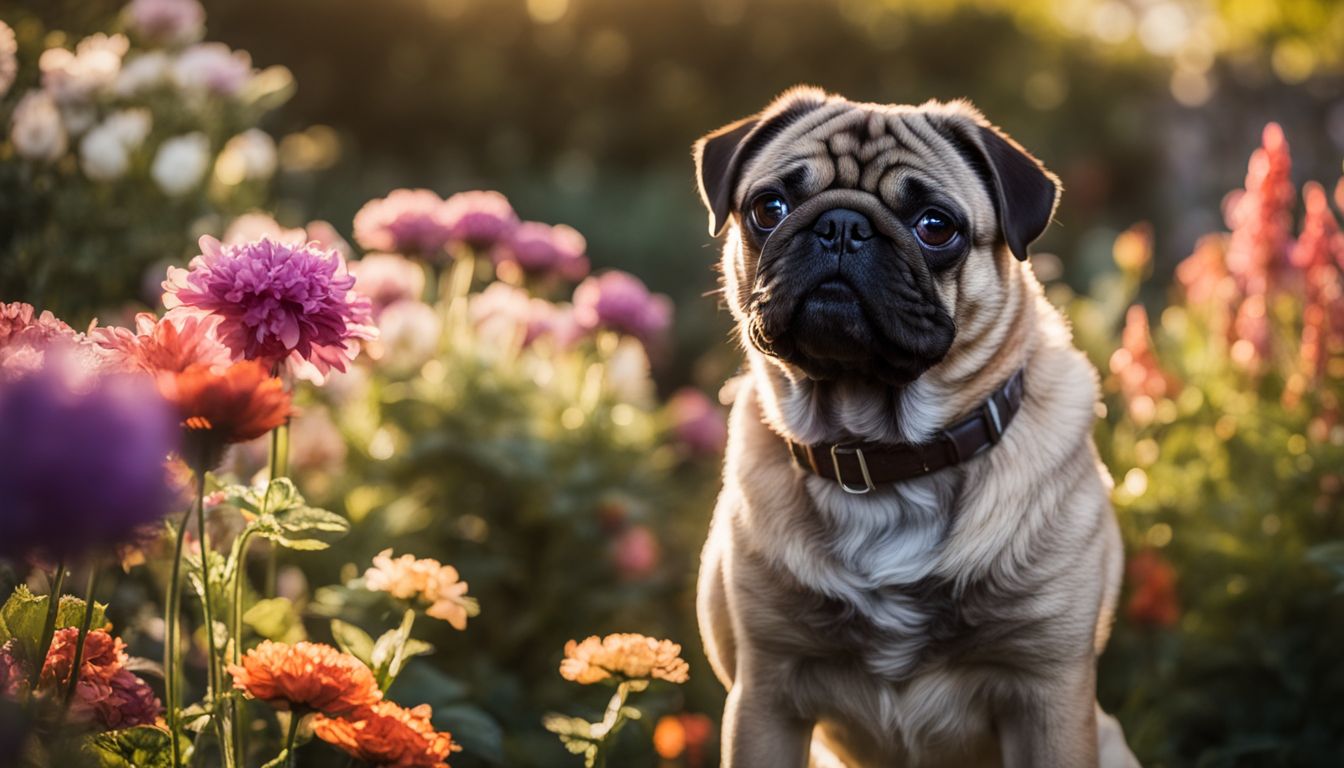
Imagine looking at a Pug whose coat swirls with shades of light and dark, casting an almost tiger-like pattern across their soft fur; this is the brindle Pug, an enchanting variation within the breed that carries a distinctive striped appearance.
Their unique coloration isn’t just a visual treat but also a fascinating example of canine genetics in action.
Color genetics
Color genetics are fascinating, especially when it comes to the brindle pattern in pugs. This unique coloring appears as dark stripes on a lighter background and is a result of complex genetic combinations.
For our brindle beauties, certain genes must come together just right to create this striking coat. The genes responsible for the brindle color are recessive, meaning both parents need to carry this trait for their offspring to possibly exhibit the pattern.
Each pup inherits various alleles from its parents that contribute to its coat color. In pugs, while fawn and black remain the standard recognized colors by most kennel clubs, the rare brindle pattern captures hearts with its distinctiveness.
Breeding specifically for this color can be tricky since it’s less predictable without consistent genetic dominance. Despite not being widely accepted by kennel clubs, we know that unique patterns like brindle hold special appeal and add diversity within our beloved breed.
Physical characteristics
Brindle pugs stand out with their distinctive coat pattern, setting them apart from the typical fawn and black colors recognized by purebred breeders. Their fur features a mix of dark stripes on a lighter background, which can vary from subtle shades to bold contrasts.
This tiger-stripe-like appearance is especially eye-catching and contributes to the desire many have for this particular type of pug.
These compact dogs have a charming affinity for snuggling and are well-loved as lapdogs due to their small size and affectionate nature. They possess the classic pug face with deep wrinkles, large expressive eyes that often melt hearts, and a short-muzzled nose characteristic of brachycephalic breeds.
While they share these loveable traits with other pugs, it’s their rare brindle coat that truly makes them one-of-a-kind in crowds of their curly-tailed peers.
History of Brindle Pugs
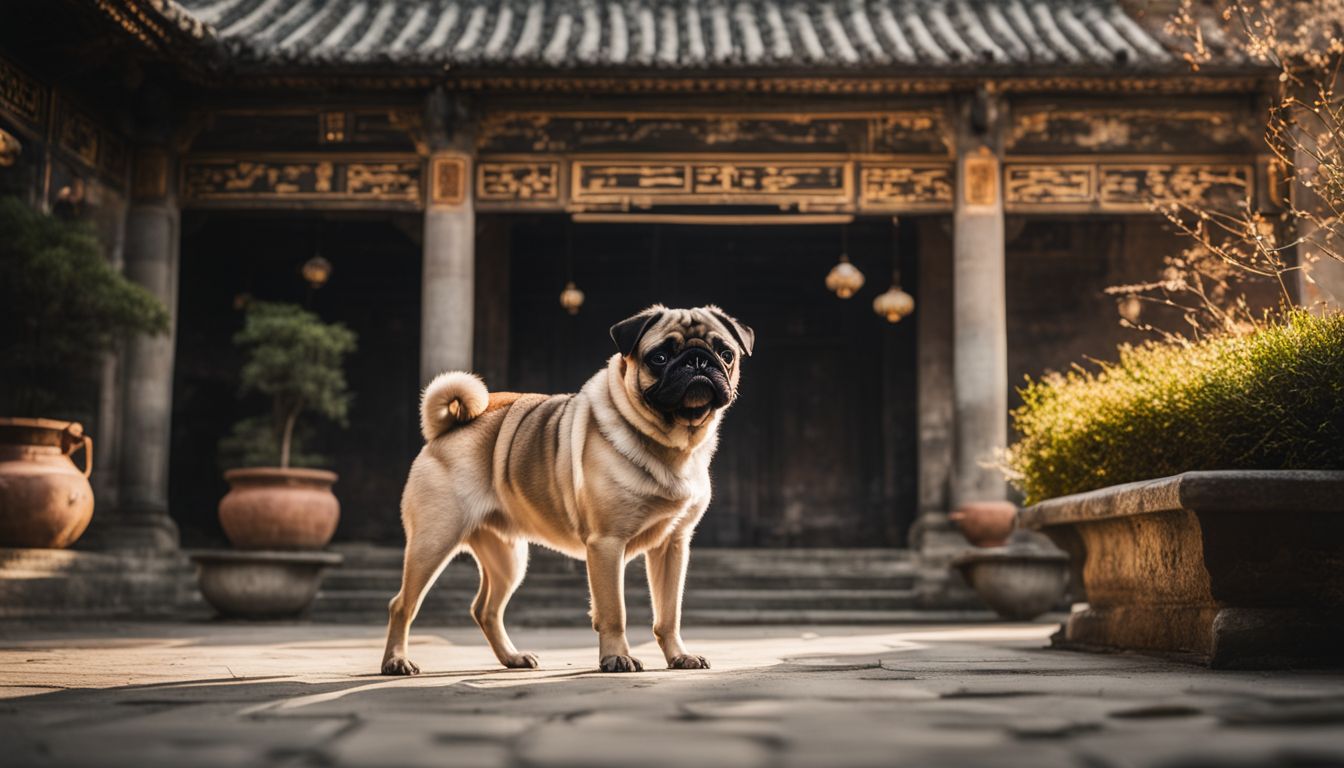
Brindle pugs carry a distinctive heritage, tracing their lineage back to ancient China where they were treasured by emperors for their unique appearance. Over time, these charming dogs captured the hearts of European and North American families, cementing their place in the canine world’s tapestry.
Origin in China
The ancient country of China is recognized as the birthplace of the beloved Pug breed. These charming dogs were held in high esteem by Chinese emperors, and treasured as lap warmers and companions.
They lounged in luxury alongside their noble owners, sometimes even guarded by soldiers. This esteemed status reflects how deeply these dogs are rooted in history and culture. Their distinct features and expressive faces captured hearts centuries ago just as they do now.
Over time, Pugs journeyed beyond their homeland, stealing the spotlight across continents with their unique presence. The brindle pattern we’re curious about today carries whispers of this rich legacy, appearing occasionally like rare gems among pugs—echoing a fascinating blend of mystery and regal elegance from an empire long past.
As we turn our attention to how these special canines found favor outside Asia, let’s explore their rise in popularity throughout Europe and North America.
Popularity in Europe and North America
As we explore the journey of brindle pugs, it’s fascinating to see how they’ve captured hearts across Europe and North America. Despite not being officially recognized by the American Kennel Club or other prestigious organizations, these charismatic canines with their striking coats have found a special place among dog lovers.
Our adoration for them stretches from bustling cities to cozy countryside homes where their playful nature and unique appearance draw admirers and curious onlookers alike.
Their distinct coat pattern sets brindle pugs apart from the more common fawn and black pugs that dominate breed standards. This rarity has sparked a high demand, making each brindle pup even more precious in the eyes of aficionados who treasure diversity within this beloved breed.
As we delve into why these pups are considered exotic gems in the world of dog breeds, let’s also prepare to understand just how scarce they truly are.
The Rarity of Brindle Pugs
When it comes to Pugs, the brindle coat pattern is a hidden gem within the breed, with its swirling shades creating a unique tapestry of color. These distinctive pugs are more than just a rarity; they are a conversation starter among enthusiasts, capturing attention wherever they trot.
Only 1% of all Pugs
Many of us are enchanted by the unique and striking look of brindle pugs, but finding one is like searching for a needle in a haystack. This distinctive coloring creates swirls of beautiful patterns across their coats that set them apart from the standard fawn and black colorings we’re used to seeing in these lovable pooches.
They make up only 1% of the pug population, making them incredibly uncommon companions.
We understand why dog lovers are drawn to their rarity and striking appearance. Brindle pugs carry a patchwork of dark stripes over a lighter base, giving them an exotic look that’s hard not to admire.
But this special coat pattern does more than just capture hearts; it can also catch the eye – and open wallets – as they often come with higher price tags due to their scarcity.
Despite not being recognized by major kennel clubs like AKC or FCI, for those who cherish uniqueness in their furry friends, brindle pugs hold an irresistible appeal that goes beyond traditional breed standards.
Exotic and sought-after breed
With such a small percentage of pugs displaying this enchanting coat, brindle pugs truly stand out from the crowd. Their distinctive stripes capture attention and have created a fervent following among dog enthusiasts who are eager to find these majestic creatures.
They’re not just rare; they’re works of living art, each with an individual pattern as unique as a fingerprint. Often seen as collectors’ items in the canine world, these exotic pugs carry with them an air of uniqueness that makes every encounter with one memorable.
We understand why people seek out brindle pugs despite their scarcity. They represent something special—a deviation from the norm that brings excitement into the lives of owners and admirers alike.
Owning one can feel like having your own little piece of natural wonder, reflecting the beauty and complexity found across various species in nature where brindle patterns appear. For those who cherish rarity and beauty in pets, a brindle pug offers a perfect blend of both, making them highly sought after breeds amongst us Pug Lovers around the globe.
Health Risks Associated with Brindle Pugs
Behind the distinct and striking appearance of brindle pugs, there lies a propensity for certain health challenges that prospective owners should be aware of. While their unique coat pattern may capture hearts, it is crucial to delve into the reality of potential health issues this adorable breed can face, ensuring that they receive the care and attention needed to thrive.
Eye issues
Brindle Pugs, like other pug breeds, often face eye problems due to their distinct facial structure. Their large, prominent eyes are more susceptible to injuries and disorders such as dry eyes, corneal ulcers, and even proptosis – where the eye may dislodge from its socket.
Regular check-ups with a veterinarian can catch these problems early on.
We also need to watch out for signs of discomfort in our furry friends’ eyes. Squinting or pawing at the face could indicate an issue that needs immediate attention. Responsible pug care includes protecting them from harsh elements that might harm their sensitive eyes and providing proper grooming to prevent infections.
Breathing complications
Brindle pugs, like their fawn and black counterparts, often face challenges with their breathing. Their compact faces and short nasal passages are cute but can lead to brachycephalic airway obstruction syndrome (BAOS).
This condition makes it tough for our little friends to get enough air, especially during exercise or in hot weather. They might snort, snore, or even gasp for breath if the problem gets severe.
We must stay alert to any signs of distress in our pugs’ breathing patterns. Regular check-ups with veterinarians can catch issues early on. If a brindle pug shows difficulty breathing or starts to cough frequently, it’s critical to seek professional advice quickly.
Surgery may sometimes be needed to correct narrowed nostrils or an elongated soft palate that’s common in these precious pups.
Cost of care
Caring for a brindle pug involves expenses that might be higher than for other breeds, especially given their rarity. Their unique coat requires regular grooming to keep it shiny and healthy.
Beyond the basics of food and routine vet visits, these pups can have specific health issues like eye problems or breathing complications due to their flat faces. It’s not just about purchasing price; ongoing healthcare costs can add up too.
We make sure our furry friends stay active and fit, but we may face bills from special diets to manage weight or surgery for any hereditary conditions they might develop. After considering the cost of care, let’s look into what it takes day-to-day to ensure a happy life for your brindle pug in terms of diet and exercise needs.
Caring for a Brindle Pug
Caring for a Brindle Pug involves understanding their unique needs and tailoring your care routine to ensure they lead a happy, healthy life. From nutritious diet choices to regular exercise plans, every aspect of their wellbeing requires special attention due to their distinctive coat and genetics.
Diet and exercise needs
Feeding our brindle pugs the right diet is crucial for their health and happiness. These little dogs need high-quality dog food that’s rich in nutrients but not too calorie-dense to avoid weight gain, which can strain their small bodies.
We should measure out meals carefully and resist the urge to spoil them with too many treats. Pugs are known to become overweight without proper portion control, so let’s stay vigilant about what they eat.
Exercise is just as important for keeping our fur babies fit and lively. Brindle pugs love short but regular walks; these keep them active without overexerting their tiny legs or causing breathing difficulties due to their brachycephalic nature.
Playtime at home also helps prevent separation anxiety by engaging their minds and strengthening the bond we share with them. Let’s ensure ample opportunities for both physical stimulation and rest throughout the day for a balanced lifestyle.
Grooming tips
Keeping our brindle pugs looking their best requires some special attention to grooming. Their double coat means they shed, but regular brushing can help manage this and keep their unique stripes shining.
Use a soft-bristle brush or a hound glove to gently remove loose hair and dirt; doing this two to three times a week will make a big difference. Baths are important too, but not too often, as overbathing can strip away natural oils from their skin.
We must pay close attention to the wrinkles on their faces. These adorable folds can collect moisture and debris which may lead to irritation or infection if not cleaned regularly with a damp cloth.
Ensure you dry them thoroughly after each clean! Keep an eye on their nails as well; trim them monthly to prevent discomfort when walking. With these simple steps, we ensure our brindle pugs remain happy, healthy, and handsome companions.
Training considerations
Training a brindle Pug requires patience and consistency, just like with any other dog. Their unique coat color doesn’t affect their learning ability, but keep in mind that these dogs can be quite stubborn.
Using positive reinforcement methods is key; reward your fur baby for good behavior with treats and praise to encourage them. Short training sessions work best since Pugs tend to lose interest quickly.
Consider also the brachycephalic nature of Pugs when planning your training routine. Exercises should not be too demanding as their short noses make it harder for them to breathe, especially during hot weather or strenuous activity.
Focus on mental stimulation with puzzle toys and low-impact activities that won’t overexert your pug puppy but still challenge their bright little minds.
Adopting or Purchasing a Brindle Pug
If you’re captivated by the unique beauty of brindle pugs and are considering adding one to your family, stay tuned for insightful tips on navigating through adoption or finding a responsible breeder.
Rescue organizations and adoption process
Finding a brindle pug can be quite a journey, but don’t overlook the chance to adopt from rescue organizations. These groups take in pugs that need new homes, and occasionally, you might find a rare brindle among them.
Adopting gives a dog a second chance at life and often costs less than buying from breeders. Rescue teams thoroughly vet each animal for health issues and behavior, ensuring they match with the right family.
The adoption process will involve an application to learn about your living situation and experience with pets. Many rescue groups look for stable homes where pugs can receive the care they deserve.
Once approved, there’s usually an adoption fee which covers vaccinations, spay/neuter procedures, and other necessary medical treatments the dog may have received. By opting to adopt rather than shop, we not only save these lovable dogs but also make a stand against puppy mills that often neglect animal welfare.
Ethical breeders
In our search for a brindle pug, it’s crucial we support ethical breeders who prioritize the health and well-being of their dogs. These breeders conduct thorough genetic testing to ensure they are not perpetuating any hereditary conditions that could affect these precious pups.
They also provide ample space, proper nutrition, socialization, and love for every dog in their care.
Ethical breeders will be transparent about their breeding practices and open to questions from potential pug parents. They understand the importance of maintaining high standards not just for appearance but also for temperament and health.
Making sure our brindle pugs come from such responsible sources helps protect this unique variation of an already beloved breed.
Final Thoughts and Further Reading
We’ve delved deep into the mystery of brindle pugs, unraveling their unique charm and scarcity. Their stunning coat sets them apart in a crowd, igniting both curiosity and desire among dog enthusiasts.
Remember that while they may be harder to find and potentially more expensive, the joyful companionship of a brindle pug can enrich your life immensely. Ensure you’re ready for the commitment! For those eager to learn more about these rare beauties or other unusual pug colors, consider exploring further resources on canine genetics and breed history.
Are Brindle Pugs Rare Conclusion
In conclusion, brindle pugs captivate us with their unique and striking patterns. Their scarcity only heightens our fascination, making each brindle-coated companion a treasure in the eyes of pug enthusiasts.
While they’re a challenge to find and may come at a higher price, these extraordinary dogs inspire adoration and commitment among those who are lucky enough to welcome one into their home.
If you’re seeking rarity and beauty in your next furry friend, a brindle pug could be the perfect match.
Are Brindle Pugs Rare FAQs
1. What makes brindle pugs rare?
Brindle pugs are considered rare because the brindle color is not a standard coat color for purebred dogs recognized by the American Kennel Club (AKC). This pattern is often seen in other breeds, like boxers and mastiffs.
2. Can you tell me about different pug colors?
Pugs come in several colors, including fawn with a black mask, solid black, and sometimes even white or silver. However, true brindle patterns are uncommon among pugs.
3. Why don’t I see many brindle pugs at pet stores or shelters?
Since the brindle pattern isn’t typical for purebred pugs, they are less likely to be found in pet stores or shelters compared to more common pug colors.
4. Is it possible that my brindle-colored dog is still a purebred pug?
While your dog may have characteristics similar to a purebred pug, actual purebred brindles are very unusual due to specific breeding standards set by kennel clubs.
5. How do breeders get the unique coat of a Brindle Pug?
Often this unique coloring comes from cross-breeding with other dogs that carry the gene responsible for the distinctive striped pattern known as ‘brindle,’ which can result in mixed-breed pups rather than purebreds.
6. Does having a rare color affect a Brindle Pug’s health?
The color of their coat doesn’t impact their health directly; however, all prospective owners should be aware that regardless of coat color, these dogs can face issues like hip dysplasia and conditions related to being short-nosed (brachycephalic syndrome).

